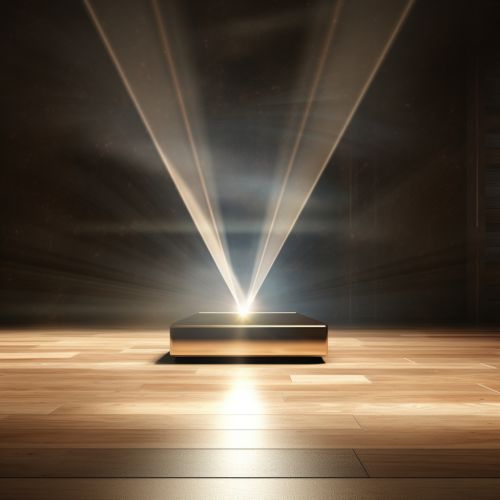Radiation pressure
Introduction
Radiation pressure is the pressure exerted by the electromagnetic radiation on the surface of an object. It is a consequence of the quantum mechanical nature of light, which behaves both as a wave and as a stream of particles called photons. Each photon carries a certain amount of momentum, and when these photons strike a surface, they transfer their momentum to it, creating a pressure.


Fundamental Concepts
The concept of radiation pressure is rooted in the wave-particle duality of light, a fundamental principle of quantum mechanics. This duality means that light exhibits properties of both waves and particles. As a wave, light can be described by its wavelength, frequency, and intensity. As a particle, light is composed of discrete packets of energy called photons, each carrying a specific amount of energy and momentum.
Photon Momentum
The momentum of a photon is given by the equation p = E/c, where E is the energy of the photon and c is the speed of light. This equation is derived from the energy-momentum relation in special relativity, which states that the total energy of a particle is equal to its momentum times the speed of light.
When a photon strikes an object, it can either be absorbed or reflected. In either case, the photon transfers its momentum to the object, exerting a force on it. The total force exerted by a stream of photons is the radiation pressure.
Radiation Pressure Equation
The equation for radiation pressure P is given by P = I/c, where I is the intensity of the light and c is the speed of light. This equation is derived from the definition of pressure as force per unit area, and the fact that the force exerted by a photon is equal to its momentum change per unit time.
Applications and Effects
Radiation pressure has a variety of applications and effects in different fields of science and technology.
Astronomy
In astronomy, radiation pressure plays a crucial role in the dynamics of stars and galaxies. It provides a counterbalance to the gravitational pull of a star's own mass, preventing it from collapsing under its own weight. This balance between radiation pressure and gravity is known as hydrostatic equilibrium.
Radiation pressure also drives the stellar winds that emanate from stars, and it is responsible for the tails of comets always pointing away from the sun.
Solar Sails
In technology, one of the most promising applications of radiation pressure is in the concept of solar sails. These are spacecraft propulsion devices that use the pressure exerted by sunlight to propel a spacecraft. The idea is to use a large, highly reflective sail to catch as many photons as possible, and use their momentum to drive the spacecraft forward.
Optical Tweezers
Another application of radiation pressure is in Optical tweezers, a scientific instrument that uses a focused laser beam to provide an attractive or repulsive force, depending on the relative refractive index between particle and surrounding medium. This can be used to manipulate microscopic objects, such as cells and small particles.
